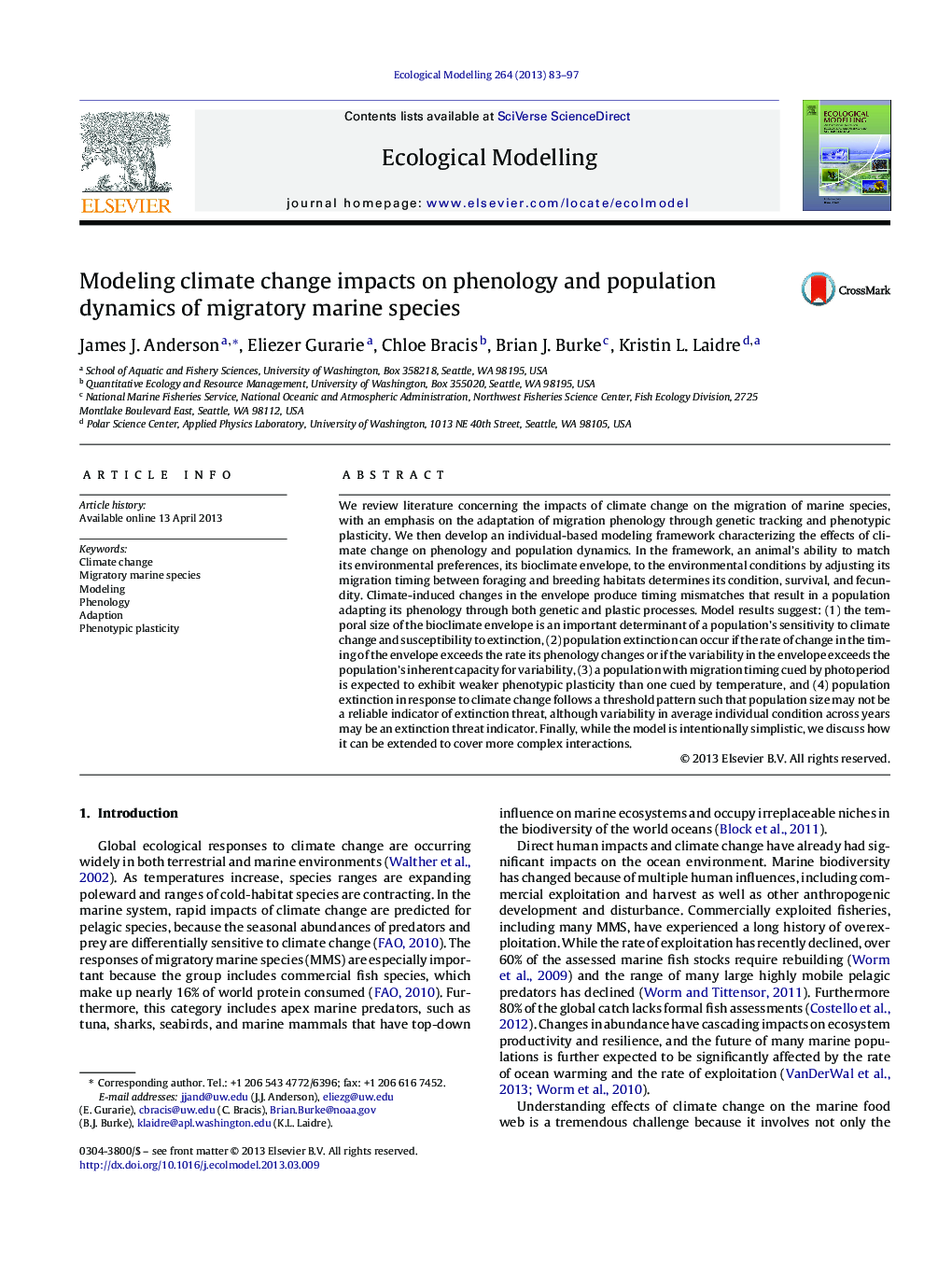| Article ID | Journal | Published Year | Pages | File Type |
|---|---|---|---|---|
| 4376088 | Ecological Modelling | 2013 | 15 Pages |
•We review literature of climate change impacts on migratory marine species.•Emphasized phenology adaption by genetic and phenotypic plasticity processes.•Modeled climate change effects on population dynamics and phenology with IBM.•Extinction depends on bioclimate envelope size and rate of phenology adaptation.•High variability in body condition may be an indicator of extinction potential.
We review literature concerning the impacts of climate change on the migration of marine species, with an emphasis on the adaptation of migration phenology through genetic tracking and phenotypic plasticity. We then develop an individual-based modeling framework characterizing the effects of climate change on phenology and population dynamics. In the framework, an animal's ability to match its environmental preferences, its bioclimate envelope, to the environmental conditions by adjusting its migration timing between foraging and breeding habitats determines its condition, survival, and fecundity. Climate-induced changes in the envelope produce timing mismatches that result in a population adapting its phenology through both genetic and plastic processes. Model results suggest: (1) the temporal size of the bioclimate envelope is an important determinant of a population's sensitivity to climate change and susceptibility to extinction, (2) population extinction can occur if the rate of change in the timing of the envelope exceeds the rate its phenology changes or if the variability in the envelope exceeds the population's inherent capacity for variability, (3) a population with migration timing cued by photoperiod is expected to exhibit weaker phenotypic plasticity than one cued by temperature, and (4) population extinction in response to climate change follows a threshold pattern such that population size may not be a reliable indicator of extinction threat, although variability in average individual condition across years may be an extinction threat indicator. Finally, while the model is intentionally simplistic, we discuss how it can be extended to cover more complex interactions.
